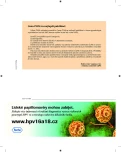Pregnancy and delivery in a patient with pure 46,XY karyotype
Summary of actual knowledge about XY women
Authors:
M. Poláková 1
; D. Alexander 1; J. Šulc 1; L. Zetová 1; R. Vlk 2; A. Křepelová 3; D. Žantová 4
Authors place of work:
GEST IVF, Centrum reprodukční medicíny, Praha
1; Gynekologicko-porodnická klinika FN Motol, Praha, přednosta prof. MUDr. L. Rob, CSc.
2; Ústav biologie a lékařské genetiky 2. LF UK a FN Motol, Praha, přednosta prof. MUDr. M. Macek Jr., DrSc.
3; Gynekologická ambulance, Praha
4
Published in the journal:
Ceska Gynekol 2013; 78(5): 443-447
Category:
Původní práce
Summary
Type of study:
Summary review and a case report.
Settings:
GEST IVF, Centre of Reproductive Medicine, Prague.
Introduction:
In scientific literature there two syndroms have been described in the presence of pure 46,XY karyotype when an individual is phenotypically and psychosexually identified as a woman. Androgen insensitivity syndrom (AIS) and pure gonadal dysgenesis XY (GD XY, Swyer syndrom). Thanks to the presence of a uterus in Swyer syndrom we can treat this type of sterility with donated oocytes.
Method:
The paper describes both syndromes from prenatal, genetical, endocrinological, oncological, reproductive and perinatological points of view. A case study corncerning a patient with pure gonadal dysgenesis XY, who successfully became pregnant through a donated oocytes programme, is also described. The pregnancy progressed physiologically, and a healthy boy, 3820g/52cm, was delivered in term by ceasarean section.
Discussion:
In world scientific literature at least fifteen successful pregnancies with pure gonadal dysgenesis XY have been described. In spite of the expectation of diminished uterine capacity, children are born to term with a normal delivery weight.
Conclusion:
This article should be considered as a summary of all actual knowledge about these patients. This article should be available and usefull for clinicians who come across XY females. The case study provides evidence that even an individual with male genetic gender can be pregnant and deliver a healthy child.
Keywords:
pure gonadal dysgenesis – androgen insensivity syndrom – Swyer syndrom – primary ovarian failure
Zdroje
1. Bashamboo, A., McElreavey, K. NR5A1/SF-1 and development and function of the ovary. Ann Endocrinol, 2010, 71, 3, p. 177–182.
2. Ben, TR., et al. 46,XY pure gonadal dysgenesis with gonado-blastoma and dysgerminoma. Tunis Med., 2008, 86, 7, p. 710–713.
3. Dirnfeld, M., et al. Sebsequent successful pregnancy and delivery after intracytoplasmatic sperm injection in a patient with XY donadal dysgenesisms. EJOG, 2000, 88, p. 101–102.
4. Dumic, M., et al. Report of fertility in a woman with a predominantly 46,XY karyotype in a family with multiple disorders of sexual development. JCEM, 2008, 93, 1, p. 182–189.
5. Eunice, M., et al. Familiar pure gonadal dysgenesis with 46,XY karyotype in three siblings and gonadoblastoma in the youngest siblings. Int J Hum Genet, 2009, 9, 2, p. 123–126.
6. Hořejší, J. Dětská gynekologie. Praha: Avicenum, 1990.
7. Chen, M., et al. Successful pregnancy in a gonadectomised woman with 46,XY gonadal dysgenesis and gonadoblastoma. Fertil Steril, 2005, 84, 1, p. 217–219.
8. Jorgensen, PB., Kjartansdóttir, KR., Fedder, J. Care of women with XY karyotype: a clinical practice guideline. Fertil Steril, 2010, 94, 1, p. 105–113.
9. Kan, AKS., Abdalla, HI., Oskarsson, T. Two successful pregnancies in a 46,XY patient. Human Reprod, 1997, 12, 7, p. 1434–1435.
10. Knower, KC., et al. Failure of SOX9 regulation in 46XY disorders of sex development with SRY, SOX9 and SF1 mutations. PLoS One, 2011, 6,3, e17751.
11. Kohler, B., et al. Five novel mutations in steroidogenic factor 1 (SF1,NR5A1) in 46,XY patiens with severe underandrogenisation but without adrenal insuficiency. Hum Mutat, 2008, 29, 1, p. 59–64.
12. Kokcu, A., et al. Pure gonadal dysgenesis and spontaneous pregnancy: A case report. Gynecol Endocrinol, 2010, 26, 2, p. 103–104.
13. McKnight, KK., Bates, GW. Jun. Atypical presentation and management dilemma of mixed gonadal dysgenesis. Fertil Steril, 2011, 95, 1, p. 324–326.
14. Moore, KL., Persaud, TVN. Zrození člověka – Embryologie s klinickým zaměřením. Praha: ISV, 2002.
15. Nussbaum, R., McInnes, R., Willard, H. Klinická genetika. 6. vyd. Thompson & Thompson, 2004.
16. Palival, P., et al. Identification of novel SRY mutations and SF1 (NR5A1) changes in patiens with pure gonadal dysgenesis and 46,XY karyotype. Mol Hum Reprod, 2011, 17, 6, p. 372–378.
17. Plante, BJ., Fritz, MA. A case report of successful pregnancy in a patient with pure 46,XY gonadal dysgenesis. Fertil Steril, 2008, 90, 5, p. 43–44.
18. Pierce, SB., et al. Mutations in the DBP-deficiency protein HSD17B4 cause ovaria dysgenesis, hearing loss, and ataxia of Perrault syndrome. Am J Hum Genet, 2010, 87, 2, p. 282–288.
19. Selvaraj, K., Ganesh, V., Selvaraj, P. Successful pregnancy in a patient with a 46,XY karyotype. Fertil Steril, 2002, 78, 2, p. 419–420.
20. Siddique, H., Daggett, P., Artley, K. Successful term vaginal delivery in a 46,XY woman. PLoS One, Brief comunications, 2007, p. 298–299.
21. Yen, SSC., Jaffe, RB. Reproductive endocrinology. Philadelphia: WB Saunders, 2009.
22. White, S., et al. Copy number variation in patiens with disorders of sex development due to 46,XY gonadal dysgenesis. PLoS One, 2011, 6, 3, e17793.
Štítky
Detská gynekológia Gynekológia a pôrodníctvo Reprodukčná medicínaČlánok vyšiel v časopise
Česká gynekologie

2013 Číslo 5
- Ne každé mimoděložní těhotenství musí končit salpingektomií
- Mýty a fakta ohledně doporučení v těhotenství
- I „pouhé“ doporučení znamená velkou pomoc. Nasměrujte své pacienty pod křídla Dobrých andělů
- Gynekologické potíže pomáhá účinně zvládat benzydamin
- Jak podpořit využití železa organismem bez nežádoucích účinků
Najčítanejšie v tomto čísle
- Inkarcerace dělohy v graviditě – úskalí diagnostiky, klinického průběhu a terapie: dvě kazuistiky
- Rizikové faktory karcinomu endometria
-
Těhotenství a porod u pacientky s čistým karyotypem 46,XY
Souhrn dosavadních poznatků o XY ženách - Specializační vzdělávání v gynekologii a porodnictví na lékařských fakultách: 2012–2013
